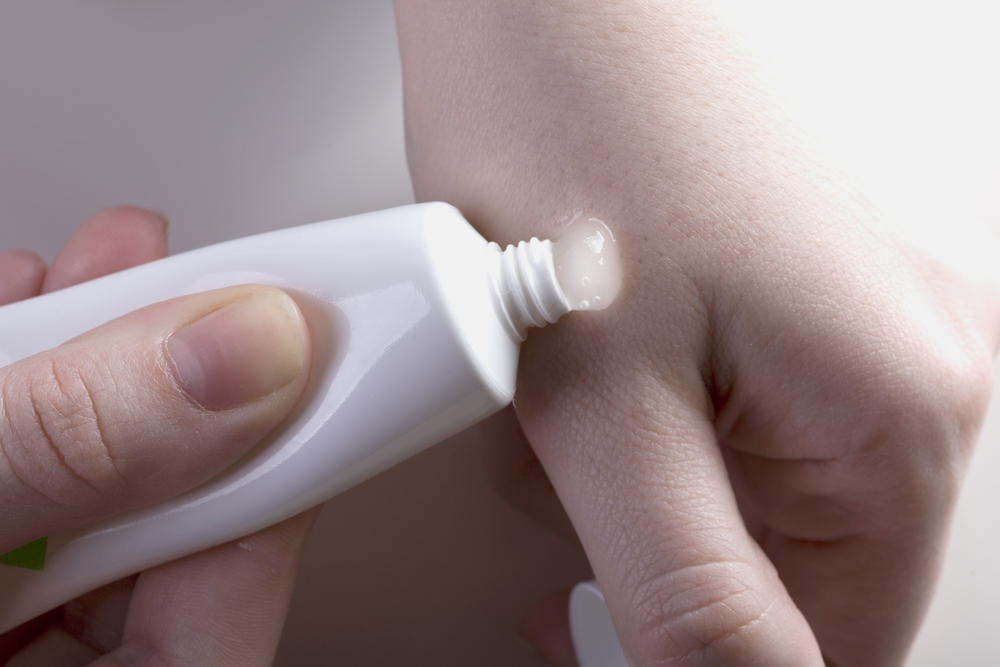Long-term Topical Corticosteroid Use can Cause Secondary Cushing’s Syndrome in Adults, Case Report Shows
Written by |

Long-term use of topical corticosteroids to treat skin problems can trigger secondary Cushing’s syndrome in adults, with a severe impact on bone health, a case report shows.
The study, “Osteoporotic vertebral fracture caused by topical corticosteroid abuse: A case report,” was published in the journal Experimental and Therapeutic Medicine.
Iatrogenic or medication-related Cushing’s syndrome is often caused by excessive corticosteroid use through intravenous (in the vein) administration. However, corticosteroid-based creams or ointments — such as the approved topical clobetasol propionate — can also induce secondary Cushing’s syndrome, according to the study.
The skin’s natural structure normally acts as a barrier to excessive corticosteroids, preventing their absorption and spread throughout the body. Thus, cases of secondary Cushing’s syndrome are more often reported in infants and young children — due to their skin’s increased absorption capacity — than in adults.
Nonetheless, enhanced absorption can occur in both children and adults when the skin is damaged or its structure is altered. Topical clobetasol propionate has been found to impair the skin’s barrier function in adults even with short-term use. As such, corticosteroids may increase their own absorption over time.
A team led by researchers from the University of Padova, in Italy, reported the case of a 32-year-old man, who arrived at a hospital with severe lower back pain which had lasted for five months and gotten worse after flexion and extension of the lumbar spine. He had no records of previous trauma that could help explain his symptoms.
The patient had a 20-year history of psoriasis, an autoimmune skin condition characterized by altered proliferation of skin cells causing them to accumulate and change skin structure. Glucocorticoids are commonly used to treat psoriasis due to their ability to inhibit the activity of immune cells.
He had been treated with systemic cyclosporine for more than a year and with Soriatane (acitretin, by Stiefel Laboratories) for over eight months to manage his psoriasis, but the primary treatment was topical therapies. He was using 0.5% clobetasol propionate cream on a regular basis for the previous eight years, at an average dosage of 100 grams per week.
Despite these different therapies, his skin symptoms worsened over time, with lesions ultimately covering approximately 90% of his body.
When he arrived at the hospital, he showed signs of moderate to severe psoriasis — with several reddish stretch marks on the trunk and generalized skin atrophy (shrinkage) — as well as a “cushingoid” appearance, with truncal obesity, “moon face,” and swollen lower extremities.
Blood analysis showed higher-than-normal levels of white blood cells and platelets, as well as slightly reduced red blood cell counts.
He also experienced height loss of 20 cm (or 0.66 feet) over the previous five years. An X-ray of his spine revealed diffuse vertebral collapse due to osteoporosis (low bone density), which is commonly associated with Cushing’s syndrome.
“[This] case was of particular interest as the vertebral collapse occurred at a relatively young age and the severity of the clinical and radiological diagnosis was unexpectedly disproportionate to either the age of the patient and the modality of [corticosteroid] use,” the researchers wrote.
The patient’s levels of osteocalcin (a protein associated with bone assembly), testosterone, and dehydroepiandrosterone (the most abundant circulating steroid in the body) were all low.
Based on all his symptoms and clinical history, he was diagnosed with secondary Cushing’s syndrome caused by long-term use of topical clobetasol propionate.
He gradually stopped using the cream, and began treatment with infliximab, the only biological treatment available for psoriasis at the time, the team noted. Complete control of the disease was achieved after four weeks.
The patient also started to take 5 mg of alendronate once daily to limit the progression of bone damage. Three months after the diagnosis of vertebral collapse, his adrenocorticotropic hormone levels normalized, with no evidence of worsening bone damage.
“The case reported highlights the risk of the inappropriate continued use of potent corticosteroid creams, potentially leading to permanent and potentially debilitating consequences,” the researchers said.





